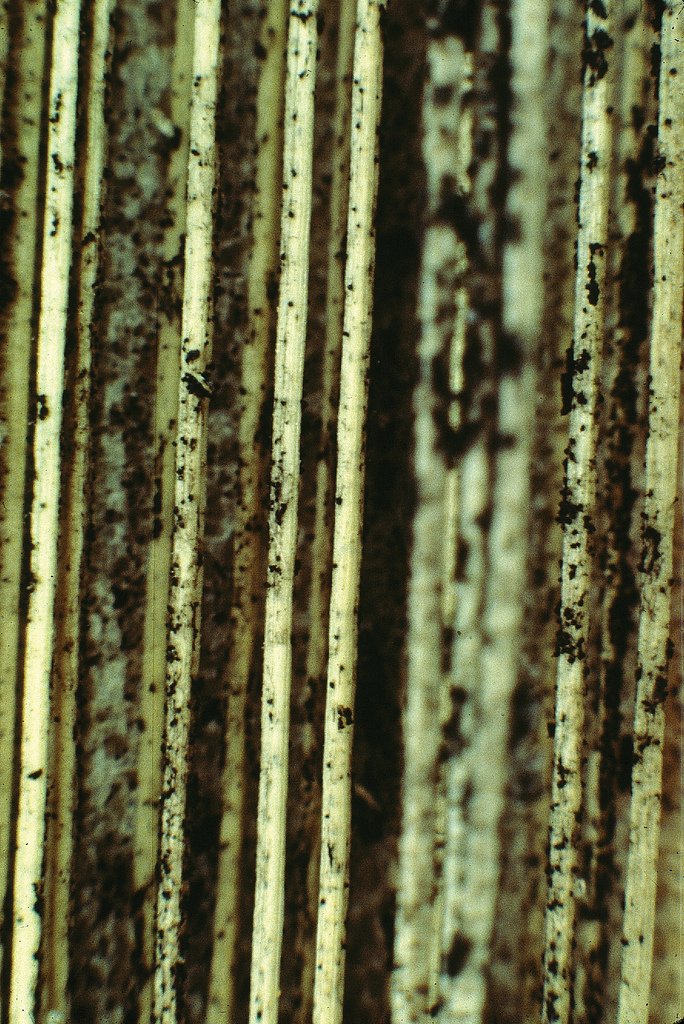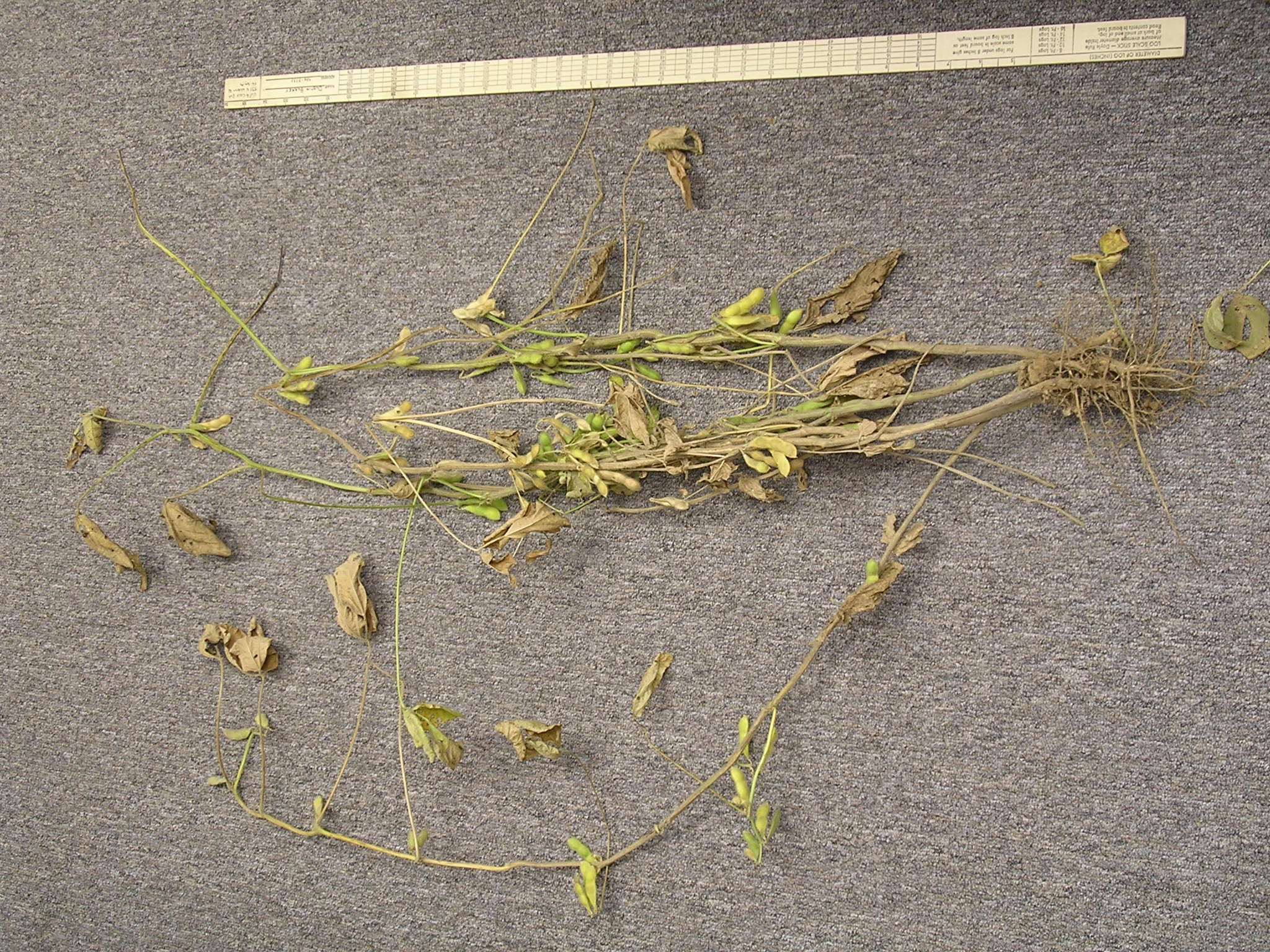(Macrophomina phaseolina)
Credits:Biovision-Infonet

(c) CIMMYT, 2006

(c) Dustin Blackey, 2004
Initial symptoms on stems and branches are spindle-shaped spots with light grey centres surrounded by brown margins. The centres of the spots have scattered dots (pycnidial bodies – fungal spores).
The spots may join up and cause the branches or whole plants to dry up and die. Diseased plants suddenly wilt. When diseased plants are uprooted their roots are rotten and shredded.
The fungus mainly attacks secondary finer roots. These roots have dark, blackened streaks underneath their barks with dots (pycnidial bodies – fungal spores).
The disease could be a serious problem in late-sown and in perennial or rationed pigeon peas.
Disease development is favoured by hot dry weather (300C). Crops are more susceptible to the disease in the reproductive than in the vegetative stage.
What to do:
- Plant resistant varieties / lines, if available.
- Plant in fields with no previous history of the disease.
- Avoid late planting.
- Rotate with cereals and fodder grasses.